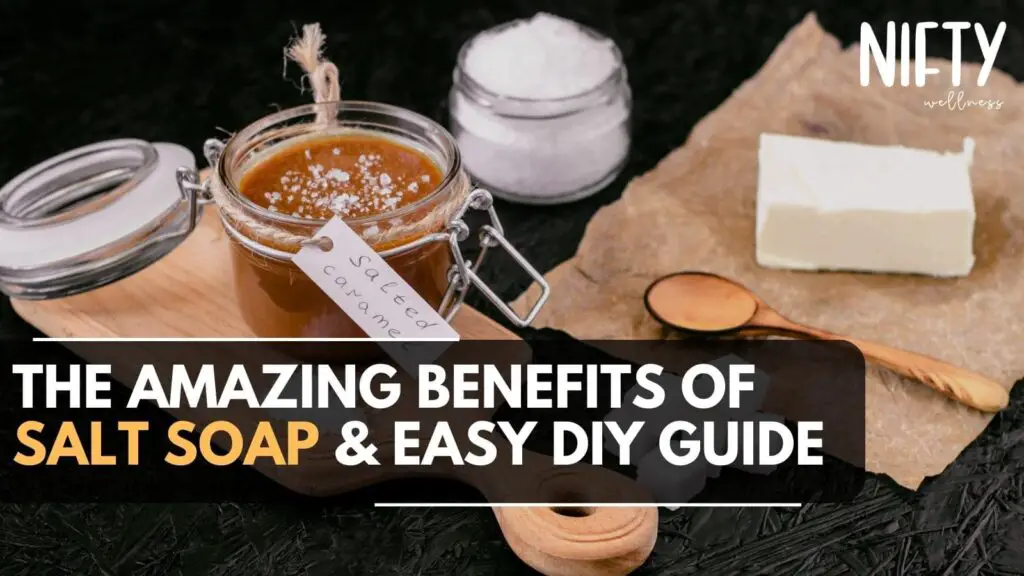Our skin plays an important role in our overall health. It protects our bodies from danger and is the first in line to deal with bacterial and fungal infections, ultraviolet rays, and injuries. Needless to say, taking care of it is vital. And salt soap benefits just that.
There are many natural components we can use on our skin to enhance its function and appearance, and salt is one of them. Now, we have already explored the benefits of using Himalayan salt in a bath.
But what if you simply don’t have enough time to enjoy a relaxing bath, or maybe you don’t even have a bath, to begin with?
As always, we’re here to bring you some good news: salt soap might bring you the benefits you’re looking for! Read on to find out more!
What Is Salt Soap
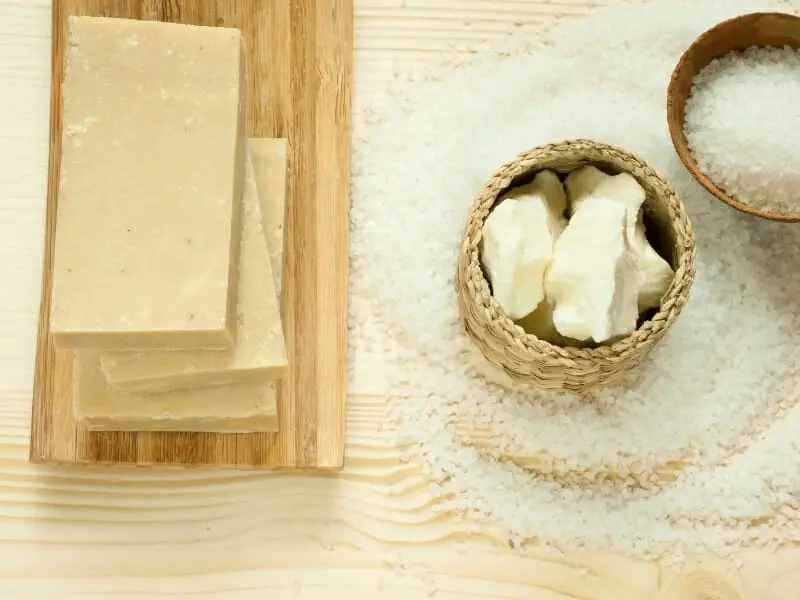
As you may have already thought, the name does speak for itself. Salt soap, often referred to as saltwater soap or sailors’ soap, is a potassium-based soap made with salt.
It was originally formulated for sailors because their regular soaps wouldn’t dissolve in seawater. That’s because seawater contains a lot of sodium, and most regular soaps are made of sodium molecules. Thus, lye and salt were incorporated into the soap.
This unique composition allows salt soap to lather effectively even in saltwater, making it an ideal choice for those spending extended periods at sea.
Check out our blog The Powerful Cistanche Benefits & What It Is. Dive into a world of vitality with Cistanche benefits.
Salt Soap Benefits
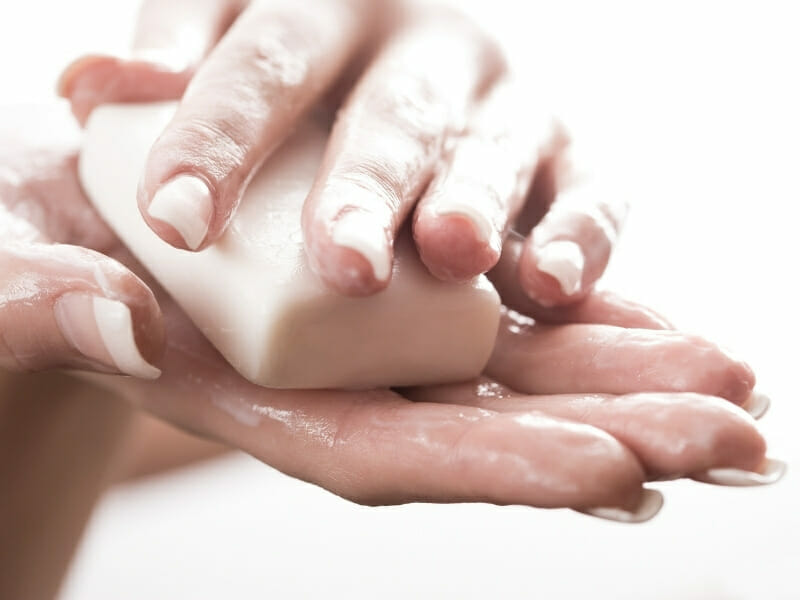
Washing and sanitizing your hands so often (ehm 2020) during the day can be very drying. And it may have gotten you thinking if there are natural soaps that can do the job while keeping your hands moisturized, right?
Well, we have two words word for you – salt soap.
Formulated with salt, it effectively cleanses and offers natural hydration, making it a nourishing choice for your hands. Experience the dual benefits of cleanliness and moisture with salt soap.
Antibacterial

Hyo-Jick Choi, a professor at the University of Alberta, has tested and proven that salt can physically destroy viruses. That means salt soap is potentially even more effective than regular soap in eliminating germs!
Harness the natural power of salt in your daily hygiene routine, as Choi’s research suggests that salt soap may offer heightened antibacterial properties, providing an extra layer of defense against harmful viruses and germs.
Soothing & Hydrating
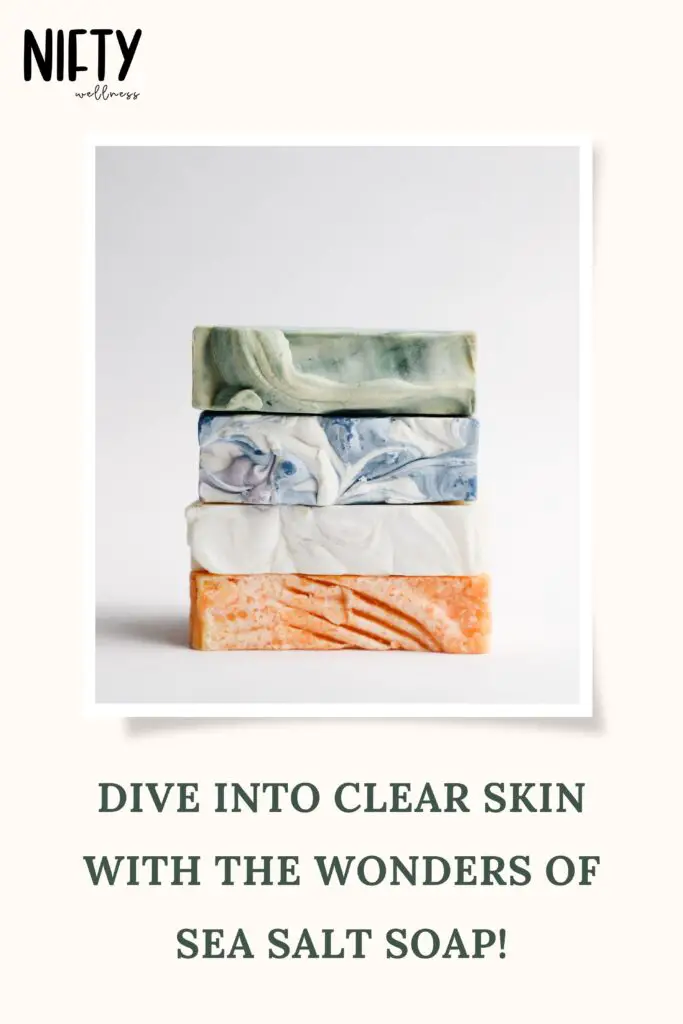
It may not come as a surprise, but seawater is known to contain a vast amount of minerals that help soothe irritation and reduce inflammation.
Sea salt soap can be excellent for psoriasis, dermatitis, and other skin conditions due to its magnesium, potassium, zinc, iodine, sodium content. As you can see, sea salt soap cleanses as well nourishes your skin!
What Kind Of Salt Is Best for Soap

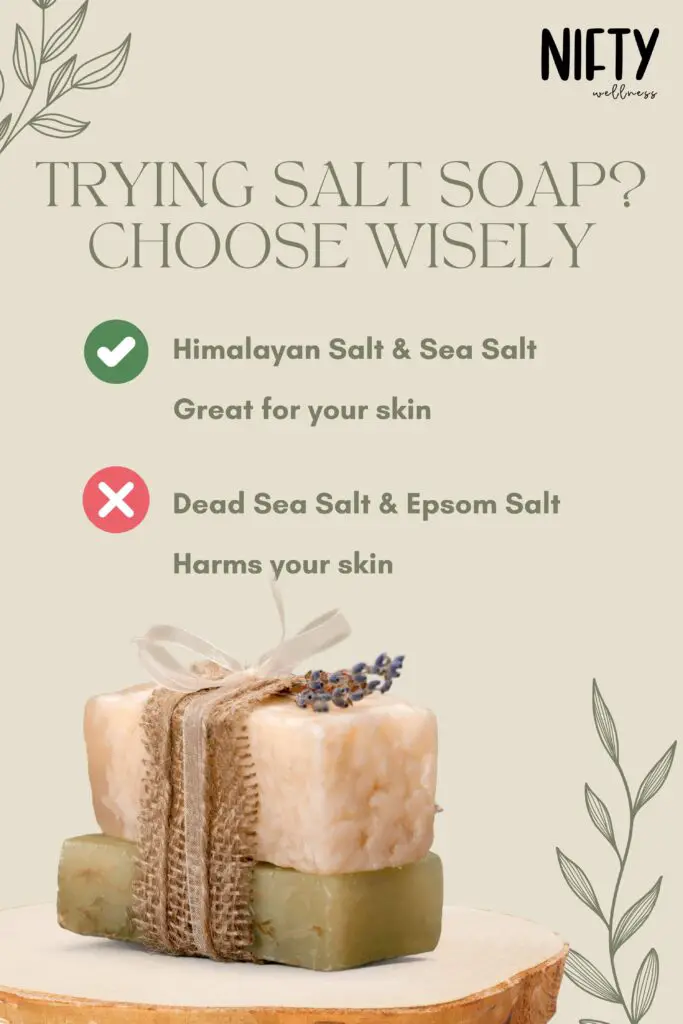
Typically, the ideal salt for soap making is considered to be Himalayan salt and sea salt. Fine or large grain can be used, it really depends on your personal preference. At the end of the day, it will melt when using warm water anyway.
Note: The amount of salt should be anywhere between 50% to 100% percent of the oil weight.
For example, if you are using 24 oz. of coconut oil, then 50% of salt would be 12 oz.
Why Not Dead Sea Or Epsom salt?
It is usually not advised to use Dead Sea salt because it is very high in minerals, while Epsom salt has high magnesium contents. These humectant salts will absorb moisture from the air and make the soap sweaty and, well, a bit yucky.
Opting against the Dead Sea or Epsom salt ensures the quality of the soap, preventing undesired effects like excessive sweating and maintaining a pleasant texture for an enjoyable and practical cleansing experience.
Read our blog 8 Powerful Moroccan Red Clay Benefits & Uses. Transform your skincare and haircare routine with Moroccan red clay!
How To Make Salt Soap At Home

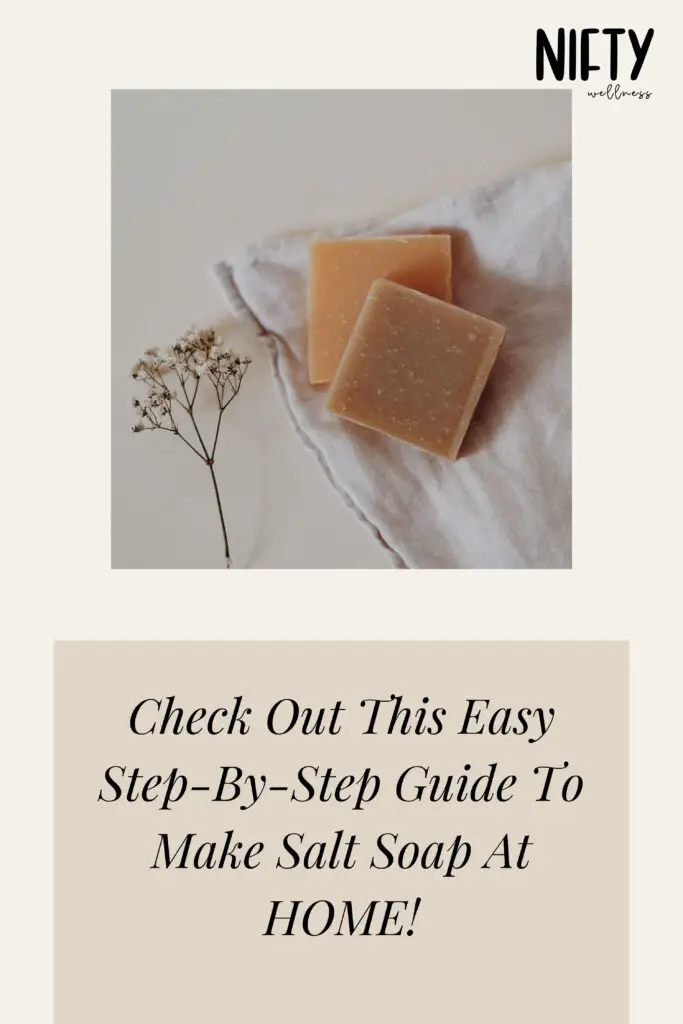
You didn’t think that we would get you excited about this soap bar and leave you without a recipe, did you? Because now, we are going to guide you on how to make your own salt soap bar at home.
First things first, the main ingredients for your soap will be coconut oil, olive oil and soap. You might already be wondering why coconut oil and the answer is simple – salt stops the lather, so we need coconut oil to do that.
Now, we are going to be using lye in our soap and some people might be worried about that.
Many believe that lye makes soap unnatural but we’re here to tell you that it’s not true. The thing is, it is an essential ingredient for saponification (an actual word) and what makes soap, well, soap. When done correctly, no lye will remain.
This recipe will consist of 50% coconut oil and 25% olive oil. The salt content will be at 50%.
What you’ll need:
- 2 Glass jars
- Non-reactive pot for oils
- Digital infrared thermometer
- Silicone mold (best with individual cavities)
- Protective gloves and eyewear
- Spatula for mixing lye
- Spoon to put soap mixture into the mold
- Immersion blender
Ingredients for 2 lbs (32 oz.) of soap:
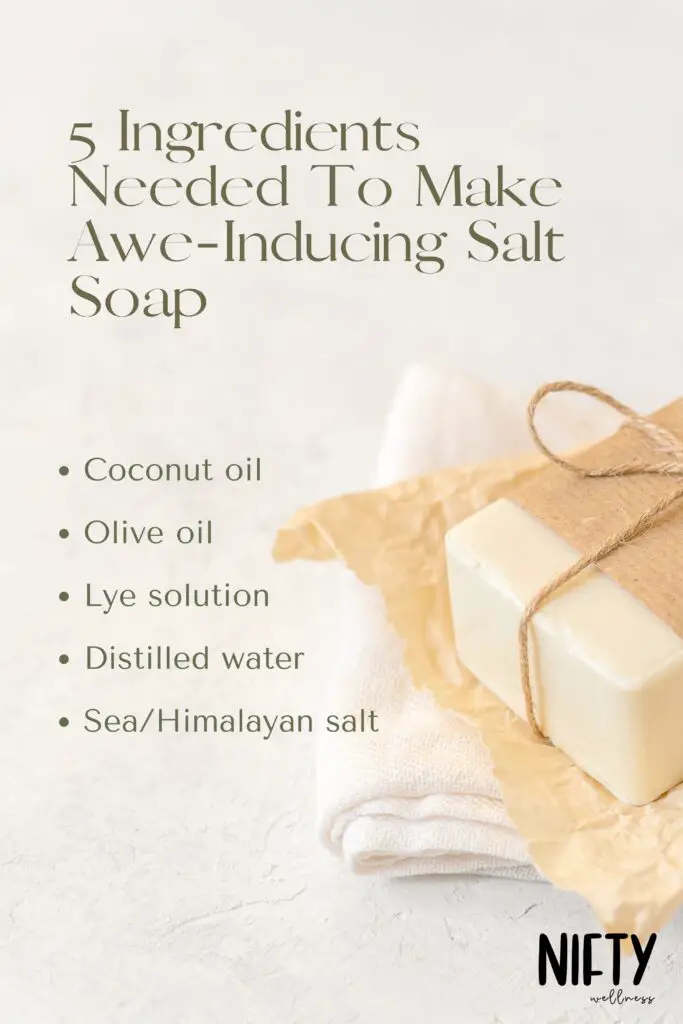
- 12 oz. Coconut oil
- 4 oz. Olive oil
- 2 oz. Lye solution
- 6.5 oz. distilled water (3 times more than lye)
- 8 oz. Sea salt or Himalayan salt.
Instructions
- Pour 6.5 oz of distilled water into a glass jar and set it aside.
- Put on your protective eyewear and gloves and using a scale, carefully pour the lye into the jar until you reach 2 oz.
- Slowly pour the lye into the water. Stir the mixture and keep in mind that it will become hot. Let it sit and cool to about 100 degrees.
- In the meantime, measure out your coconut oil and olive oil and put them in a non-reactive pot.
- Warm the pot with oils until they are melted. Then remove from the heat and let cool until 100 degrees.
- Use the infrared thermometer every 5 minutes or so to test the temperature. Ideally, the lye water and the oils should both be around 100 degrees and within 10 degrees of each other.
- When both temperatures are right, slowly pour the lye water mixture into the oils. This is where you can also add optional essential oils. Use an immersion blender to mix and slightly thicken the batter.
- Add 8 oz. of preferred salt and stir with a spatula until evenly distributed.
- Use a spoon to carefully put the batter into your silicone mold.
- Let it sit for 24 hours and then you can take it out of the mold.
Done! Place them in an airy place without direct sunlight and leave them there to cure for 4-6 weeks. This will allow the soap to complete the saponification process.
Conclusion
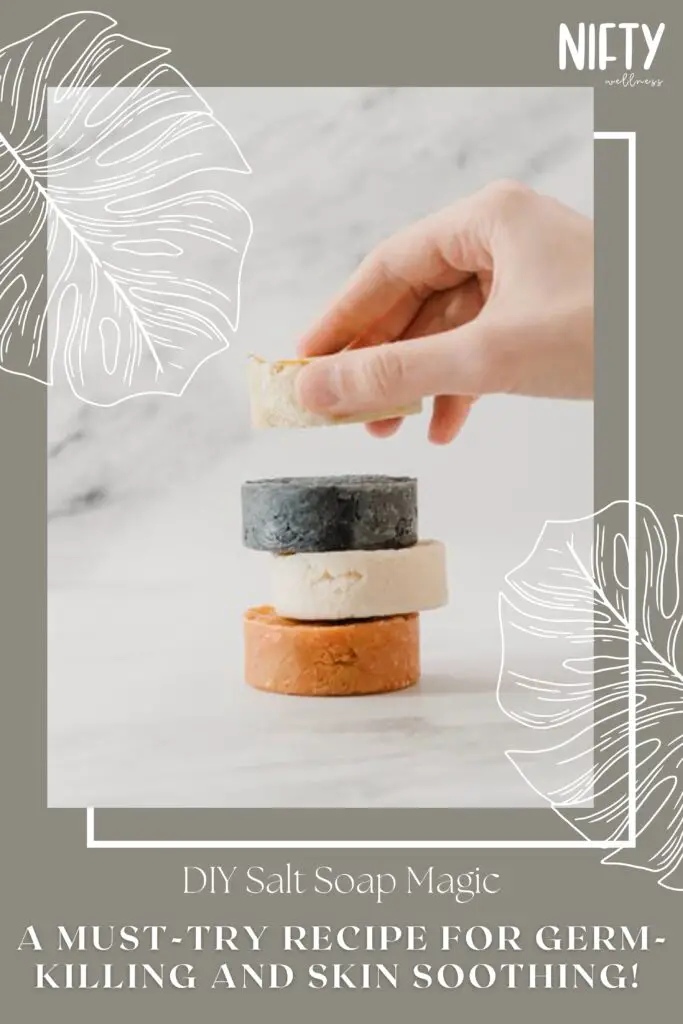
Sanitizing and washing your hands so many times a day can be very drying to our hands. Why not try using salt soap instead? Salt soap has benefits that give us the best of both worlds – it kills bacteria and soothes your skin, all in one wash.
We want to hear from you. Have you ever made your own salt soap at home? If you did, what tips would you add? Let us know in the comments below!
Discover salt soap’s nourishing and antibacterial wonders for a holistic hand hygiene experience. Share your homemade salt soap experiences and tips with us in the comments, contributing to the collective knowledge of this natural and effective skincare solution.
Frequently Asked Questions (FAQs)
Can Salt Soap Be Used on Sensitive Skin?
Absolutely! Salt soap can be used on sensitive skin, but it’s crucial to proceed cautiously. The exfoliating properties of salt may benefit some individuals by removing dead skin cells, but it could irritate sensitive skin. Start with a patch test and observe your skin’s response. If any irritation occurs, consider a gentler alternative. Always prioritize your skin’s unique needs and consult with a dermatologist if unsure.
How Often Should I Use Salt Soap?
The frequency of using salt soap depends on your skin type. For those with normal to oily skin, using it 2-3 times a week can help exfoliate and rejuvenate. If you have sensitive or dry skin, limit usage to once a week to avoid potential irritation. Always pay attention to your skin’s response and adjust usage accordingly. Hydration and moisturizing post-use are crucial for maintaining skin balance.
Are There Specific Types of Salt Soap for Different Skin Issues?
Absolutely! Different types of salt soaps cater to various skin issues. Salt soaps with antibacterial properties, like tea tree oil-infused ones, can be beneficial for acne-prone skin. Himalayan salt soaps are known for their mineral content and can benefit overall skin health. If you have sensitive skin, opting for a milder salt soap without harsh additives is wise. Choose a salt soap that aligns with your specific skin needs for optimal results.
Can I Make Salt Soap at Home?
Certainly! Making salt soap at home is a rewarding DIY project. Combine ingredients like coconut oil, shea butter, and sea salt for a simple recipe. Melt and pour soap bases make the process easier. Customize with essential oils for fragrance and additional benefits. However, ensure proper measurements and follow a trusted recipe to maintain the soap’s effectiveness. Homemade salt soap can be a fun and personalized addition to your skincare routine.
Is Salt Soap Environmentally Friendly?
Yes, salt soap can be environmentally friendly. Many formulations use natural and biodegradable ingredients, minimizing environmental impact. Opting for brands committed to sustainability and eco-friendly packaging enhances the overall environmental friendliness of salt soap. Additionally, supporting companies with ethical sourcing practices ensures salt extraction and other ingredients don’t harm ecosystems. Always check product labels and choose responsibly sourced options for a greener skincare choice.
